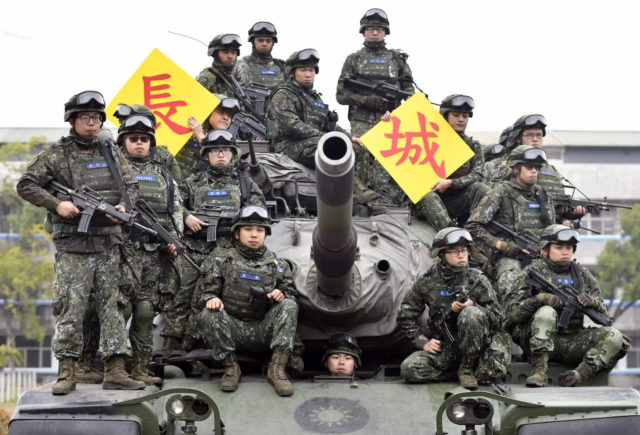
The title of this article evokes memories of the beginning of World War II and reveals one method dictators use to increase their power. In China’s case, Xi Jinping’s Anschluss of Hong Kong in June 2020 fits nicely with the way Hitler began his initial European expansion strategy, called Lebensraum (living space). In Zweites Buch, Hitler said that to dominate the world, Germany must expand its borders and areas it controls. The first way to start achieving Lebensraum would be through Anschluss — the unification of Austria and Germany. Further, he envisioned an expansion that would include Poland, Czechoslovakia, the rest of Europe and Russia.
Hitler’s addition of Austria to Germany’s national boundaries was certified by an election in April 1938 that concurred with the German annexation in a 99.7 percent vote. Hitler had talked about Anschluss as early as 1920 in one of his National Socialist German Worker’s Party speeches, especially since he was originally an Austrian German. Hitler continued to take areas of Europe that had German speaking populations such as the Sudetenland (German speaking population of Czechoslovakia) and the Rhineland. Before the beginning of WWII, Hitler extended Germany’s borders five times (Rhineland, Austria, Sudetenland, rest of Czechoslovakia, and Lithuania).
In a similar way, Xi Jinping and the Chinese Communist Party (CCP) completed the first task of China’s Lebensraum of Chinese speaking populations when the CCP effectively abrogated the 1984 Sino-British Joint Declaration. The Declaration had guaranteed “that from the time of the 1997 handover until at least the year 2047, Hong Kong would be self-governing in domestic affairs, enjoying a ‘high degree of autonomy’ under an arrangement Beijing dubbed ‘One Country, Two Systems’.” On 30 June 2020, the CCP implemented the new National Security law for Hong Kong.
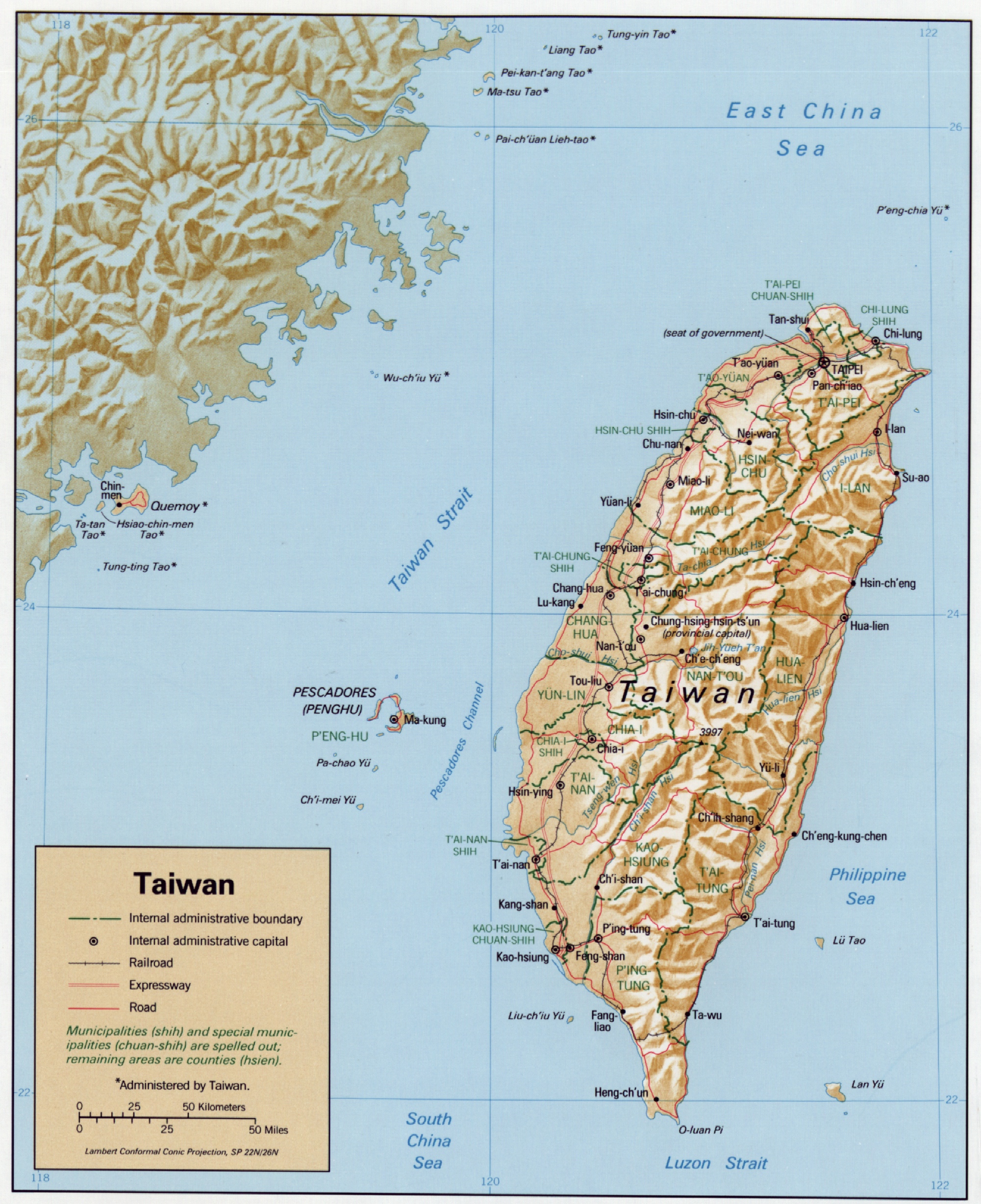 Taiwan: Anschluss, Sudetenland, or Poland?
Taiwan: Anschluss, Sudetenland, or Poland?
With Hong Kong assimilated into the PRC as a result of Xi Jinping’s direction, Taiwan is his next target. Xi has shown through various actions both symbolic and otherwise that he has aspirations to be as great as or greater than Mao Zedong, founder of Communist China. Mao, however, was unable to eliminate his Chinese opposition, the Chinese Nationalist forces of Chiang Kai-shek that had retreated to Taiwan as the Communist forces took over the Chinese mainland after WWII.
The CCP and most recently, Xi Jinping, has been attempting to take over Taiwan through overt and covert means including media warfare, economic warfare, military intimidation, political isolation, and many other means. Applying Sun Tzu’s dictum that supreme excellence consists in breaking the enemy’s resistance without fighting, the CCP’s long term goal is to break the Taiwanese public’s will and make them believe they must submit. An Anschluss of Taiwan would mean that the Taiwanese people would agree to become a part of China. In 2021, polling and voting trends suggests this option is infeasible. President Tsai Ing-wen’s second term re-election delays the path forward for “one country, two systems” emphasized by President Xi in his January 2019 speech commemorating the 40 year anniversary of the normalization of US-China diplomatic relations in 1979 and referring to Taiwan-China platitudes such as “peaceful reunification,” “We are all of the same family,” and “Chinese don’t fight Chinese.” Xi concluded his speech with a threat: “We make no promise to renounce the use of force and reserve the option of taking all necessary means.”
Hitler’s and Xi Jinping’s speeches and writings state similar goals and means. If peaceful means (Anschluss) do not achieve unification, the leaders reserved the right to conduct a military occupation (e.g., Sudetenland and Hong Kong) or invasion (Poland and islands near China’s coast).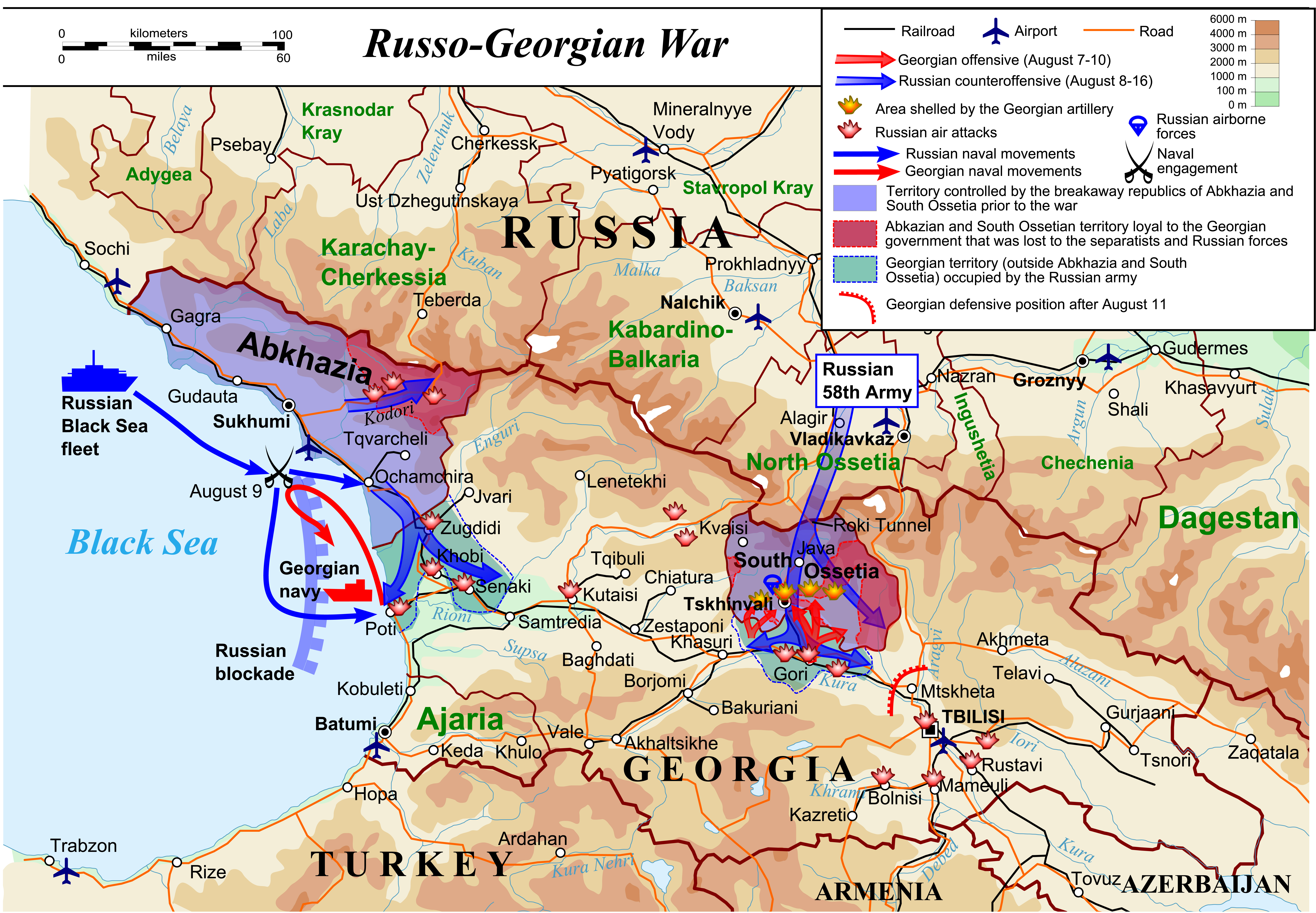
China Watches Russia
Chinese leaders can infer how the world would respond to its invasion of Taiwan from international reactions to territorial seizures over the last twenty years. In August 2008, Russia annexed Georgia’s South Ossetia and Abkhazia (taking 20 percent of the country). In March 2014, Russia occupied Crimea, the city of Sevastopol, and portions of Ukraine’s Donetsk and Luhansk regions (7.2 percent of the land). Ukraine is an internationally recognized country that has diplomatic relations with 163 countries and Georgia has diplomatic relations with more than 100 countries. Some sanctions were enacted against Russia for its invasions and Russia countered with its own sanctions against those countries. In 2021, Russia still occupies those areas and has no intention of releasing them to their former countries.
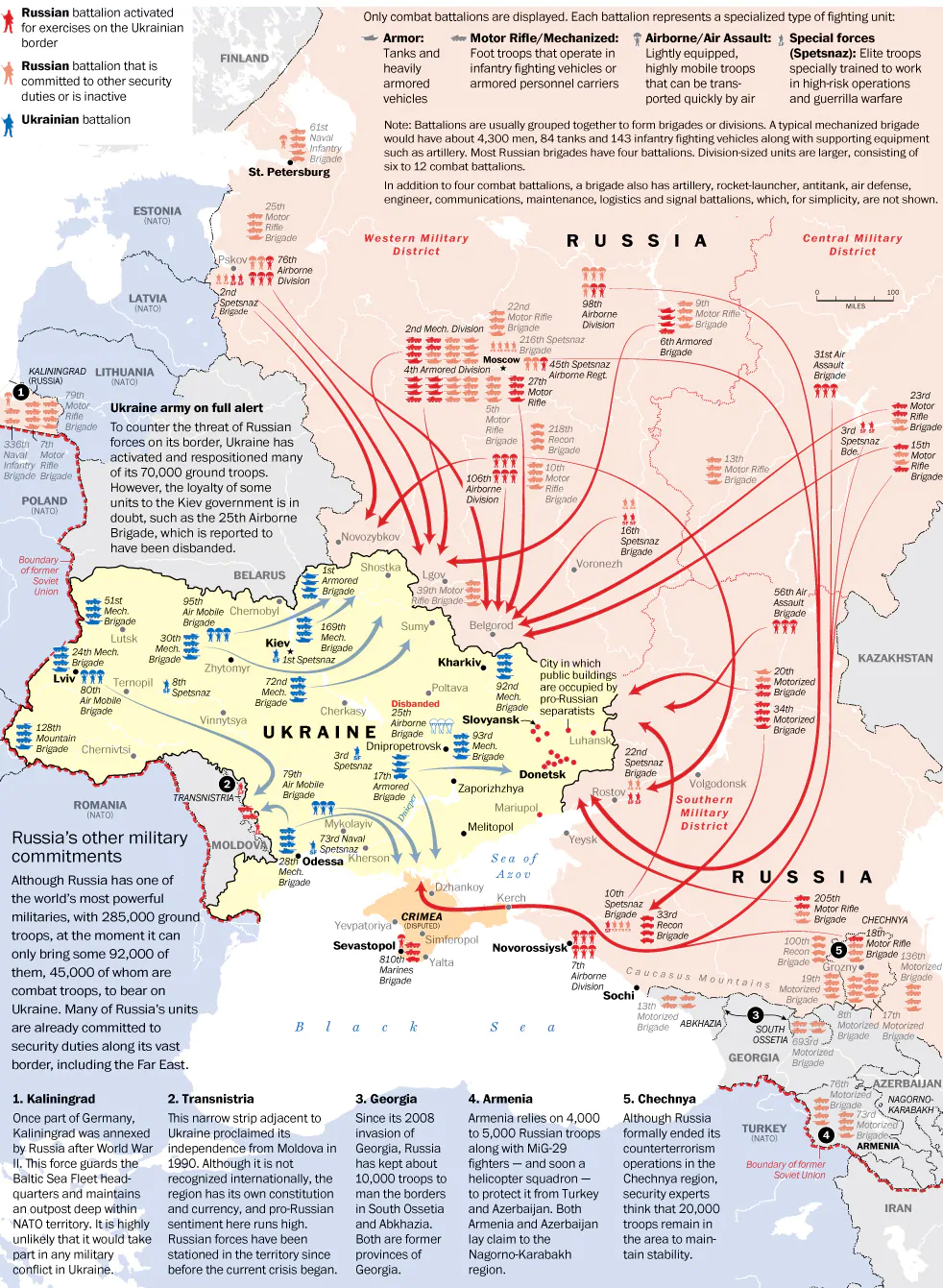
The weak international reaction to Russia’s seizure of sovereign nations’ territory suggests a similar weak response to a PRC invasion of the Republic of China (ROC) – which only a handful of small states recognize. China noted Russian actions and international reaction, especially American and European compliance. Russia’s nuclear extensive weapons stockpile and membership in the UN Security Council muted reaction by the world political bodies. CCP leaders might imagine Europe’s reaction to the invasion of Taiwan as less problematic as than Russia’s invasion of Georgia and the Ukraine since no European country has formal diplomatic relations with the Republic of China (ROC). Only 14 small countries and the Holy See have diplomatic relations with Taiwan: Guatemala, Belize, Honduras, Nicaragua, Haiti, Saint Kitts and Nevis, Saint Lucia, Saint Vincent and the Grenadines, Paraguay, Swaziland, Nauru, Tuvalu, Marshall Islands and Palau. Taiwan maintains unofficial ties with 57 nation-state members of the UN. Below is a picture timeline of decreasing recognition of the ROC.
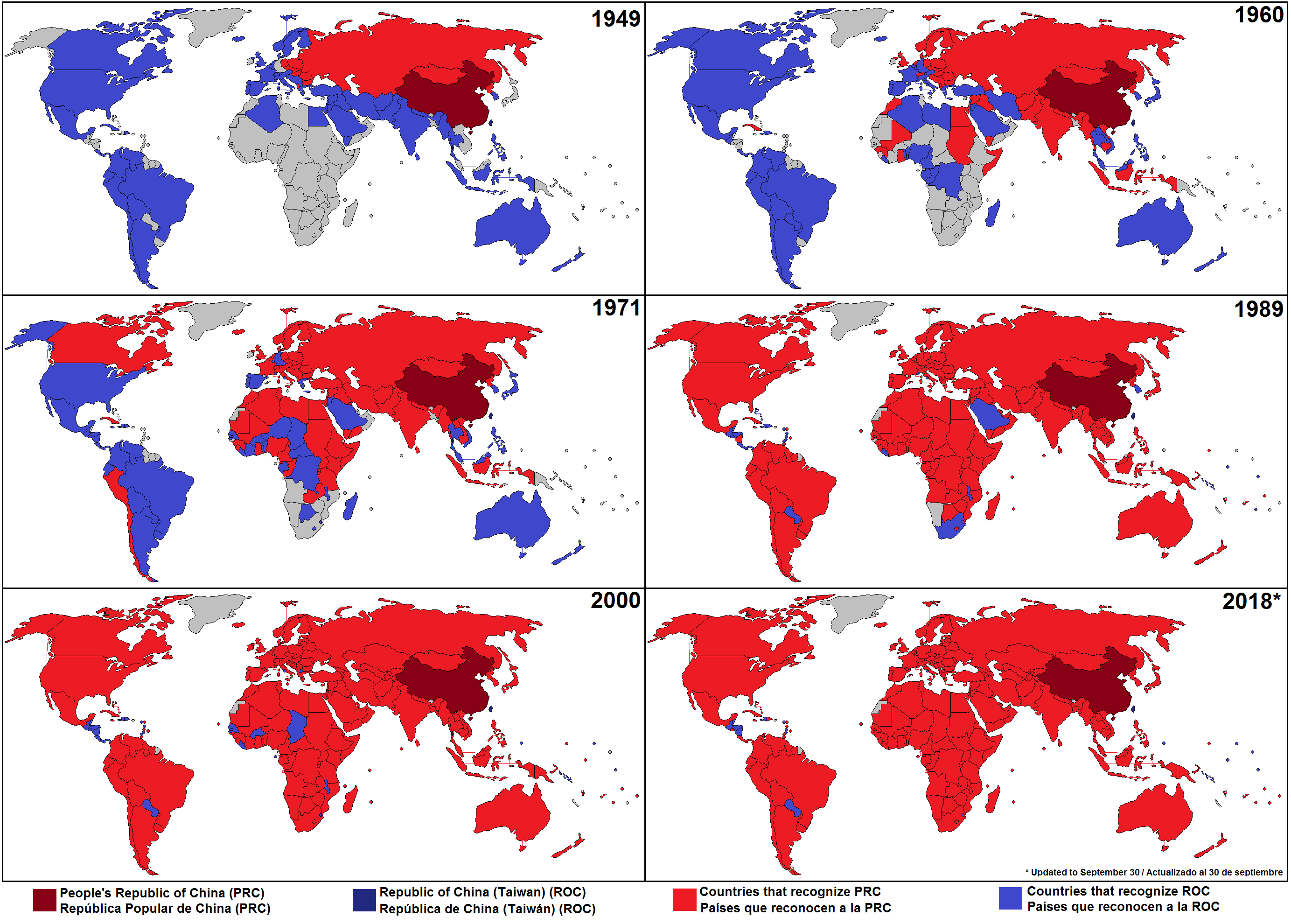 The New Vision
The New Vision
Between 2014 and 2020, Xi Jinping transformed the People’s Liberation Army (PLA) into a joint fighting force capable of conducting offensive operations. In doing so, Xi forced out corrupt senior officers and others who did not share his vision. On 1 January 2021, Xi, in his role as Chairman of China’s Central Military Commission (CMC), directed the PLA maintain “full time combat readiness” and be ready to “act at any second” for war.
In 2012, Xi became Chairman of the CCP. In his speech to the 18th National Congress of the Communist Party of China, he mentioned the “two centenary goals”: (1) the “Chinese dream” and (2) “great rejuvenation of the Chinese nation.” The latter includes the re-unification of Taiwan to the PRC. On 1 July 2021, the CCP will celebrate its 100-year anniversary. On 1 August 2027, the PLA will celebrate its 100th anniversary.
During the six-year period framing the 100-year anniversaries of the CCP and PLA, there is a high likelihood that the PRC will absorb Taiwan into the PRC. The successful outcome would be considered an “auspicious occasion” for the PRC and President Xi. Currently, Xi can take advantage of the PRC’s strong economic position, extensive military preparations for an invasion, strong diplomatic position, and a potential weak European and American response to China’s actions.
Courses of Action (COA)
When planning such a takeover, Chinese officials may consider courses of action (COAs) with branches and sequels to consider. In assessing an opponent’s COAs, one should evaluate the least likely, most dangerous, and most likely COAs. PRC officials may apply their own long history of internal warfare (The Seven Military Classics including The Art of War) and more modern texts (Unrestricted Warfare and The Science of Military Strategy) to frame strategy. In assessing a military invasion of Taiwan, a Chinese official may assess the least likely COA to be a direct confrontation with the U.S. by conducting a military invasion of Taiwan. A direct confrontation would pitch the PLA against the U.S. military, which contradicts one of the basics of Chinese War Strategy: avoid an opponent’s strength and attack their weakness; this COA would also bring maximum condemnation against them by nation-states. The most dangerous COA would be a quarantine of Taiwan of defense supplies, which was examined in a recent article for the Council of Foreign Relations (Robert D. Blackwill and Philip Zelikow, “The United States, China, and Taiwan: A Strategy to Prevent War,” February 2021). Although the CFR authors claim a quarantine is the least direct way to take over Taiwan, it is also the most dangerous since the main supplier of weapons to Taiwan is the U.S., which would not allow the PRC to prevent the re-supply of arms to Taiwan. The ambiguity of the situation (not a blockade, which would be an act of war) could cause a miscalculation that could lead to a high probability of escalation directly between the US and the PRC resulting in a possible all-out war. The most likely COA appears to be incremental pressure which the PRC has been pursuing.
During the Trump and Biden Administrations, the PLA Air Force (PLAAF) and Navy (PLAN) have been increasing the tempo of their operations near Taiwan. This activity is reminiscent of classic deception where slow escalation lulls the opposing side to not react to changes in the status quo. The Egyptian military escalated aggression slowly along the Suez Canal prior to initiating their surprise attack starting the 1973 Arab-Israeli War which Israel almost lost. Based on this COA, the PLA will conduct increasingly aggressive actions; marginal increases in aggression will not trigger the U.S. to take significant action. Such aggressions will include occupying barren islands and then building on them military bases.
Taiwan’s Outer Islands
A new step in the PRC’s salami slicing strategy might be to seize Taiwanese smaller islands that lie close to the PRC mainland. The PRC attempted to seize Taiwanese islands during the various Taiwan Strait Crises [First (1954–1955), Second (1958) and Third (1995–1996)]. Successful PRC seizures include the PLA capture of Hainan Island (April 1950), Zhoushan Island off Zhejiang (May 1950), and Wanshan Islands off the Guangdong coast (August 1950).
In this type of scenario, the PLA could use overwhelming force or special forces to take over the closest islands groups such as the Matsu, Wuqiu/Ockseu, and Kinmen/Quemoy Islands (all within 30 miles of the PRC shores and would represent less than 1 percent of Taiwan’s total territory) in a short period of time (possibly a day to several days) and pause to review global reaction. The PLA would use Lenin’s quip as a strategy, “You probe with bayonets: if you find mush, you push; if you find steel, you withdraw.” This strategy is the most likely to succeed since no naval power would want to put its ships within striking range of thousands of anti-ship missiles. Few Taiwanese military personnel are stationed on these islands. Most Taiwanese forces are stationed on the island of Formosa which is about 100 miles from mainland PRC. A Taiwanese Air Force response to protecting these islands close to the PRC mainland would put these aircraft within range of PLAAF fighters and Surface to Air Missiles (SAMs) which are all part of a highly efficient and effective integrated air defense system (IADS). If the PLA felt that it could go further (inspired by Lenin’s quote), it might try to extend its control to the Penghu/Pescadores Islands (30 miles from Formosa) which would place the PLA in a controlling position on the western side of Formosa due to geography where the vast majority of the population and the main Taiwanese seaports are located. Extending the PLA IADS to the Penghu Islands would put the PLA easily within striking range for their next action and also would place access to the Taiwan Straits under total PLA control without having taken Formosa. Additionally, from Penghu, the PLA would have many possible branches and sequels to consider such as a quarantine, a blockade, invasion or no action to pressure Taiwan. This salami slicing strategy could lead to the collapse of the Taiwanese military due to its reported lack of the following: supplies (replacement parts); lack of personnel (some units have only 60-80 percent of required manning); lack of training (lack of combat training and at most five days of training every two years for the reserves); and lack of moral (a 2020 poll concluded that 70 percent of those polled doubted that the Taiwanese armed forces could successfully defend Taiwan and another poll in 2019 found that only 15 percent would fight if the PRC invaded, 25 percent would do nothing and 13 percent would leave Taiwan).
If successful with their simultaneous island-hopping strategy, they could wait for the next opportunity to complete their takeover of Taiwan.
Conclusion
No matter which COA the PRC actually does employ to take over Taiwan, the U.S. and other allied responses would determine Taiwan’s future. If the rest of the world did not respond to PLA aggression, then the PRC, Russia and rogue countries like Iran and North Korea would be further emboldened with their subversive activities. Concurrently, other Indo-Pacific nations would feel threatened, especially if they had territorial disputes with the PRC. Even while the PRC is planning for a reunified Taiwan, the PRC is certainly eyeing the territorial mineral (South China Sea), forest (Siberia) and water/watershed resources (Lancang-Mekong, Salween-Irrawaddy, Brahmaputra (Ladakh), and the vast Siberian rivers) near its borders. For example, the PRC controls vital water resources via damns that directly affect hundreds of millions of people and Eurasian economics and politics. Will the world nations appease the growing power of the PRC and ignore its Lebensraum while simultaneously building up its Wehrmacht?
Guermantes Lailari is a retired USAF Foreign Area Officer who specialized in counterterrorism and the Middle East and is currently conducting research on authoritarian / totalitarian regimes that threaten the US.





